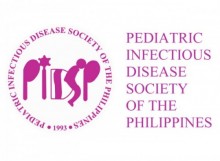Clinical Profile and Treatment Outcomes Of Acute Cholangitis in Children in a Tertiary Government Hospital in the Philippines: A Five-Year Retrospective Study.
Arianne L. Calimlim-Samson, M.D., FPPS, DPIDSP, Carmina A. delos Reyes, M.D., FPPS, FPIDSP, Germana Emerita V. Gregorio, M.D., MSc, PhD
ABSTRACT
Background: Acute cholangitis (AC) in children is a rare but life-threatening infection. Symptoms vary from mild to severe disease. There are no local published data on pediatric AC.
Objective: To determine the clinical, biochemical, ultrasonographic, microbiologic features, and treatment outcome of pediatric patients with definite AC.
Methodology: Cross-sectional study using medical records of pediatric patients diagnosed with definite AC based on the Modified Tokyo Guidelines of 2018 admitted from January 2016 to June 2021.
Results: Twenty-seven patients aged 0 to 18 years old (10.06 + 7.34), predominantly male (51.85%) were included. Choledocholithiasis (22%) and post-Kasai biliary atresia (22%) were the common underlying biliary conditions. Fever (88.89%) was the most frequent presenting symptom. Majority were classified as moderate AC (40.74%). Leukocytosis (mean 16×109/L), elevated inflammatory markers (93.33% with CRP >12mg/L and 100% with serum procalcitonin >0.25ng/mL), hyperbilirubinemia (total bilirubin 192.54±126.87umol/L) and elevated alanine transferases (mean 59 IU/L) were noted. Twenty-one out of 27 cases (87%) had a negative blood culture. Only 4
patients underwent bile culture, of which two (50%) grew Klebsiella pneumoniae resistant to empiric antibiotics. Dilated biliary ducts were observed on abdominal ultrasound in 92.59% of patients. Ampicillin-sulbactam (29.63%) was the most commonly utilized antibiotic. Discharge rate was high (88.89%).
Conclusions: AC affects all pediatric age groups but clinical presentations vary. Drug resistant organisms are a significant concern but despite this, favorable outcomes have been documented.
Keywords: Cholangitis, Children, Choledocholithiasis
https://doi.org/10.56964/pidspj20232402008
| View Full Article in PDF format |
